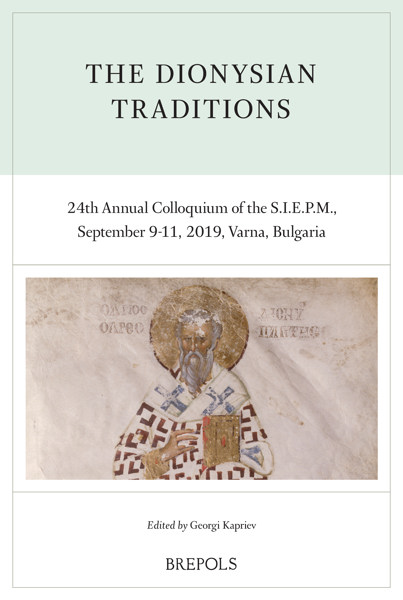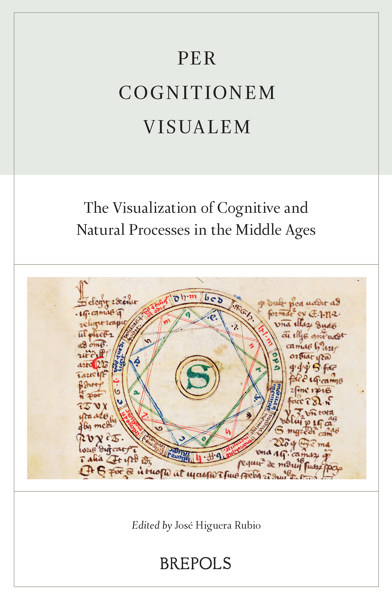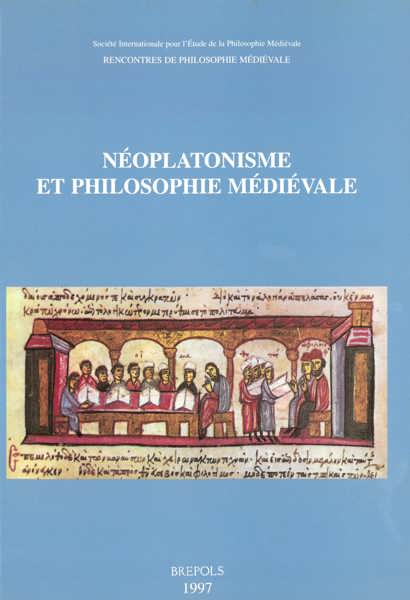
Per cognitionem visualem. The Visualization of Cognitive and Natural Processes in the Middle Ages
Acts of the XXV Annual Colloquium of the Société Internationale pour l'Étude de la Philosophie Médiévale, Porto, 14–15 and 21–22 June 2021
José Higuera Rubio (ed)
- Pages: x + 377 p.
- Size:156 x 234 mm
- Illustrations:49 b/w, 15 col.
- Language(s):English, French
- Publication Year:2023
- € 75,00 EXCL. VAT RETAIL PRICE
- ISBN: 978-2-503-60340-7
- Hardback
- Available
- € 75,00 EXCL. VAT RETAIL PRICE
- ISBN: 978-2-503-60341-4
- E-book
- Available
- Contains contributions in Open Access
The purpose of this volume is to deepen our understanding of medieval visual tools that represented and demonstrated philosophical and scientific knowledge and, to an extent, the accumulation of empirical data with a focus on the Latin, Arabic and Jewish tradition.
José Higuera Rubio is professor at UNED-Departamento de Filosofía.
Visual representations were deeply involved in medieval traditions related to the dissemination and teaching of philosophy and science. Consequently, they were not only examples of theological or philosophical interpretation, but rather brought together manifold intellectual activities, illuminating various perceptual, cognitive, and spiritual concerns. Visual tools, which appear frequently in medieval manuscripts, have often been considered as “illustrative material” intended to facilitate the comprehension and interpretation of texts. These “visual aids” offer something more than a straightforward correspondence between a conceptual interpretation and its figurative depiction. They are, in fact, key to understanding the methods of acquiring and shaping knowledge through visual frameworks with didactical, disputational or heuristic purposes. The aim of this volume is to deepen our understanding of medieval visual tools that represented and demonstrated philosophical and scientific knowledge and, to an extent, the accumulation of empirical information.
José Higuera (UNED), Introduction
Diagrams & Graphics
Roberto Hofmeister Pich (PUCRS), Dialectics, Visual Tools, and the Methods of Learning: Exploring “Visual Cognition” in Manuscripts on Logic by Jesuits Masters from Ecuador (17th-18th Centuries)
Pippa Salonius (Monash University), Ordo and Nature: The Trees of Sculpted Narrative at Orvieto Cathedral
Albert Soler (UB), Ramon Llull and the Ars Diagrammatica
Astrology & Geomancy: Visual Tools
Arianna Dalla Costa (Warburg Institute), Lunar Mansions as Celestial Images in the Thirteenth-century De signis Astronomicis
Alessandro Palazzo (Univeristà di Trento), Images and Visual Tools in the Geomantic Treatise Estimaverunt Indi
Visio et cognitio
Maria Manuela Brito Martins (Universidade Católica Portuguesa), Représentations et schémas graphiques de la species visibilis dans le De homine d’Albert le Grand
Peter John Hartman (Loyola University), John Pouilly and John Baconthorpe on Reflex Acts
Paula Oliveira e Silva & João Rebalde (IF-UP), The Diagram of minima naturalia in Marcos Jorge's Commentary on Aristotle's Physics (Physics, I, 4)
Nicolás Vaughan (Universidad de los Andes), Ockham and Wodeham on Perceptual Experience
Tamar Tsopurashvili (Ilia State University), Eckhart’s Metaphysics: The Example of Predigt 9
Luciano Micali, Visual Perception and Knowledge of God in Jean Gerson’s Tractatus de oculo
Visio et experientia
Yael Barash (Cohn Institute-Tel Aviv University), Using Visual Conventions to Depict a Visionary Experience: The Illustration of Vision II of Hildegard’s Liber divinorum operum in Lucca Codex
Francesca Galli (Università della Svizzera Italiana) Through the Mirror. (Super-)natural Properties of Reflecting Surfaces in 13th-Century Scientific and Theological Thought (Open Access)
José Higuera (UNED) The Visualization of Motion: Averroes and Albertus Magnus




